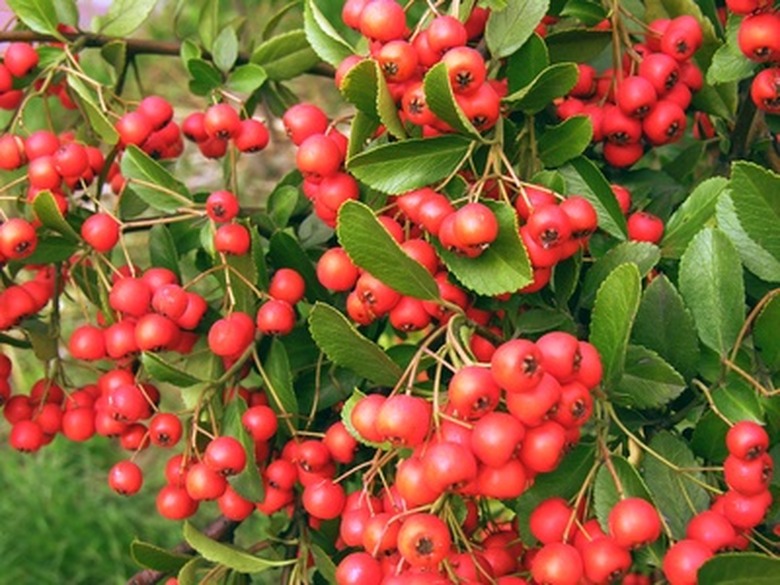Hawthorn Tree Facts
The Washington hawthorn tree (Crataegus phaenopyrum), native to the southern United States, grows to only 20 to 35 feet tall. In late spring, the tree adorns itself in soft white blossoms. The dark green foliage hides the 3-inch long thorns on the branches and trunk of the tree. In the fall, bright orange berries appear that quickly change to red as the season progresses. During the fall, the foliage of the tree turns a bright red and orange
Uses
The hawthorn tree is widely grown a hedgerow tree. The long thorns also make the tree useful as impenetrable screen. Throughout history, the hawthorn tree has been widely used in Germany to divide farmland when planted in hedgerows. A popular landscape tree when pruned, the tree also offers interest as a specimen when left unpruned so its branches grow to the ground. Nearly 200 varieties of hawthorn trees currently exist.
- The Washington hawthorn tree (Crataegus phaenopyrum), native to the southern United States, grows to only 20 to 35 feet tall.
- During the fall, the foliage of the tree turns a bright red and orange The hawthorn tree is widely grown a hedgerow tree.
History
Legend claims that the hawthorn tree's thorny branches were what formed the crown of thorns worn by Jesus. The hawthorn tree is commonly known as the "mayflower" in Europe, so it was this name that was bestowed on the boat that transported the pilgrims to the new land. Some Europeans believed fairies lived with the hawthorn tree. The tree became known as the Washington hawthorn because it was widely cultivated outside Washington, D.C. in the late 1700s, according to the Missouri Botanical Garden.
Planting Location
The hawthorn tree enjoys moist soil conditions but can tolerate brief drought once established. The tree prefers to be planted in full sunlight but will grow in partial shade with less flowering and fruit production. The tree grows well in U.S. Department of Agriculture zones 3 to 8, according to the North Carolina State University website.
- Legend claims that the hawthorn tree's thorny branches were what formed the crown of thorns worn by Jesus.
- The hawthorn tree is commonly known as the "mayflower" in Europe, so it was this name that was bestowed on the boat that transported the pilgrims to the new land.
Pests
Numerous pests often afflict the hawthorn tree. Aphid colonies enjoy taking up residence on the tree's new growth. The pear slug skeletonizes the foliage of the tree. Spider mites enjoy feeding off the sap of the tree. Hosing the tree off with water often helps to remove the aphids, spider mites and pear slugs. Borers pose a problem for weak or ill-kept trees. Tent caterpillars often form large webs in the tree, but pruning out the infected areas safely controls the insects. Scales often appear on the stems of the tree. Applying horticultural oil to the tree safely controls scale infestations.
- Numerous pests often afflict the hawthorn tree.
- Tent caterpillars often form large webs in the tree, but pruning out the infected areas safely controls the insects.
Diseases
Fireblight, caused from the Erwinia amylovora bacteria poses a serious threat to the hawthorn tree. The first indication of a problem is when the leaves begin to turn brown, giving the tree an overall appearance of being burned. Immediately prune out infected areas. There is no chemical control for fireblight, according to the U.S. Forest Service. Leaf blight also attacks the foliage of the tree. The fungus causes rust-colored dots to appear on the leaves and then they drop to the ground. Several other fungal infects attack the hawthorn tree. Control them using fungicides.
- Fireblight, caused from the Erwinia amylovora bacteria poses a serious threat to the hawthorn tree.
